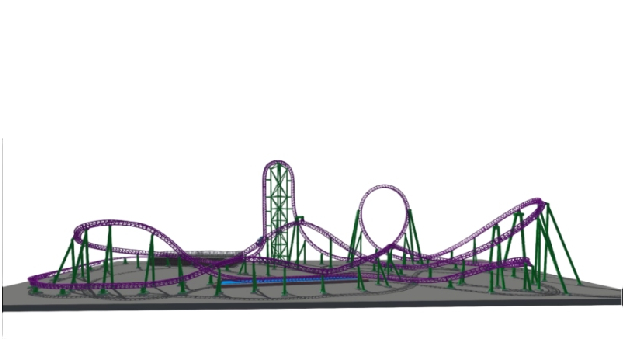- Albanian
- Arabic
- Belarusian
- Bengali
- Czech
- English
- French
- German
- Hebrew
- Hungarian
- Indonesian
- irish
- Italian
- Japanese
- kazakh
- Persian
- Russian
- Thai
- Uzbek
- Vietnamese
roller coaster engineering
The Thrills of Roller Coaster Engineering
Roller coasters have long been a symbol of adventure and excitement in amusement parks across the globe. The intricate design and engineering of these exhilarating rides not only attract millions of thrill-seekers but also represent a fascinating interplay of physics, creativity, and safety. The art of roller coaster engineering combines various disciplines such as mechanical engineering, structural engineering, and even psychology to create rides that are not only thrilling but also safe and enjoyable.
At the foundation of roller coaster design lies physics, particularly the principles of motion and forces. Engineers meticulously calculate the gravitational forces, centripetal forces, and the friction involved throughout the ride’s course. When designing a roller coaster, one of the primary objectives is to ensure that riders experience excitement without compromising their safety. This is achieved through a careful balance of speed, height, and the design of twists and turns.
One of the most critical stages in roller coaster engineering is the layout design, where engineers use computer-aided design (CAD) tools to create realistic simulations. These simulations allow for the visualization of the ride, helping engineers to predict how it will perform. By testing the design virtually, teams can make adjustments to elements such as the steepness of drops, the sharpness of turns, and the duration of the ride before any physical construction begins. This not only saves time and resources but also enhances the overall design quality.
Safety is paramount in roller coaster engineering. Each ride must adhere to strict regulations and guidelines which vary from one region to another. Engineers must conduct thorough testing and analysis to ensure that all components can withstand the forces exerted during operation. This includes regular inspections of track integrity, train design, and the braking systems, all of which are crucial in preventing accidents. The materials used in construction, such as steel and composite materials, are chosen for their strength and durability to ensure a safe riding experience.
roller coaster engineering

Incorporating elements of thrill is another hallmark of roller coaster engineering. The psychological aspect of the ride is carefully considered in the design process. Elements like vertical loops, corkscrews, and sudden drops are strategically placed to elicit maximum adrenaline from riders. The anticipation created by slow climbs and unexpected drops plays a significant role in enhancing the thrill factor. Engineers also understand the importance of smooth transitions; using elements like bunny hops allows for brief moments of weightlessness, intensifying the overall experience.
The aesthetic appeal of roller coasters cannot be overlooked. Many amusement parks seek to make each ride visually striking, often integrating colorful designs and theming that enhances the overall experience. Engineers work with designers to ensure that the roller coaster complements its surrounding environment while maintaining the mechanical integrity of the ride.
Today, technology has pushed the boundaries of roller coaster engineering even further. The introduction of virtual reality (VR) roller coasters has revolutionized the ride experience. By incorporating VR headsets, riders can immerse themselves in an alternate world, adding layers of excitement to the traditional ride. This innovation requires engineers to adapt their designs to integrate the technology seamlessly, ensuring that the physical movements of the coaster align with the visual experience provided by the VR system.
In conclusion, roller coaster engineering is a dynamic and multifaceted field that blends innovation, safety, and thrill. From the initial designs to the rigorous testing protocols, engineers are dedicated to creating rides that challenge the limits of both design and the human spirit. As technology continues to advance, we can only anticipate the future of roller coasters, where the thrill of the ride is enhanced by cutting-edge engineering and design. Whether you are a fan of the classics or excited for the next generation of coasters, one thing remains true the art and science of roller coaster engineering will continue to captivate and thrill us for years to come.
-
Flume Ride-Hebei Zhipao Amusement Equipment Manufacturing Co., Ltd.|Thrilling Water Attraction&Customizable DesignJul.30,2025
-
Flume Ride - Hebei Zhipao Amusement Equipment | Water Coaster, Thrilling DescentJul.30,2025
-
Flume Ride - Hebei Zhipao | Thrilling Water AttractionJul.30,2025
-
Flume Ride: Thrilling Water Attraction by Hebei Zhipao|Log Flume Manufacturers&Flume Ride DesignJul.30,2025
-
Flume Ride-Hebei Zhipao Amusement Equipment Manufacturing Co., Ltd.|Thrilling Water Coaster, Safe DesignJul.30,2025
-
Flume Ride-Hebei Zhipao Amusement Equipment Manufacturing Co., Ltd.|Thrilling Water Attraction, Safe DesignJul.30,2025
